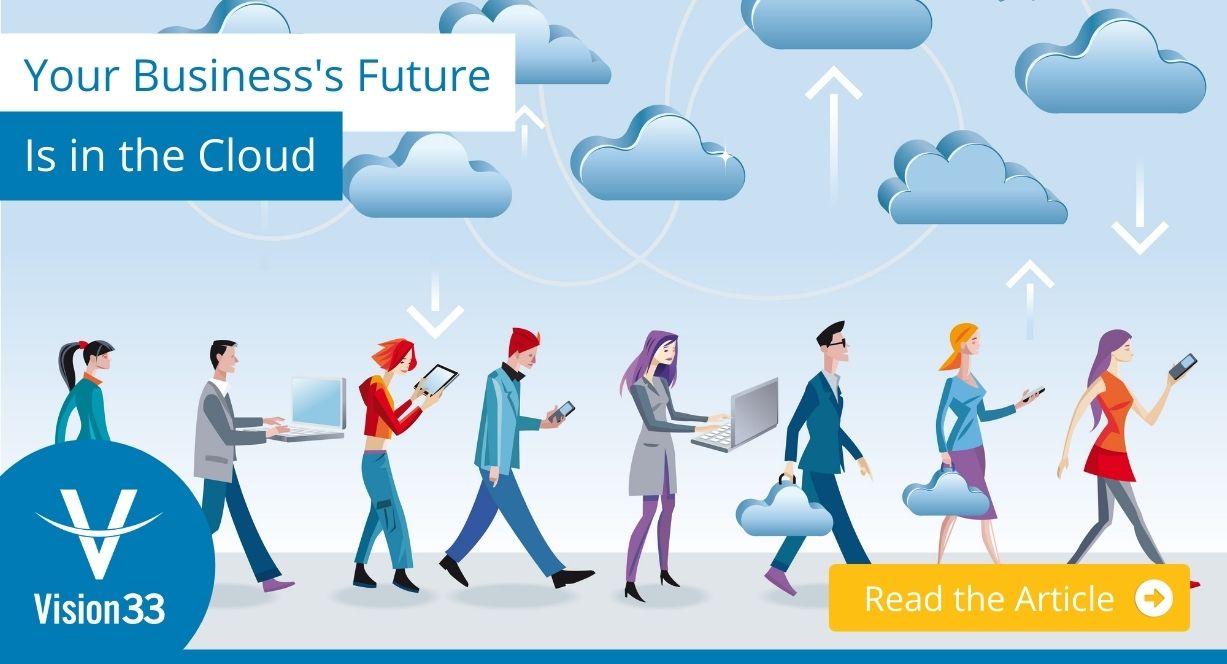Envision Your Business’s Future in the Cloud
SAP Business OneLearn how SAP cloud ERP solutions reduce cost and digitally transform growing businesses into...

January 05, 2022
Blog > Your Business's Future Is in the Cloud
The words ‘ERP implementation’ and ‘easy’ are rarely spoken in the same breath. In my 20+ years of working with enterprise resource planning (ERP) solutions, I’ve learned every project faces unique challenges. Is there an easy part of ERP implementations? Yes—but that wasn’t the case before cloud ERP.
When a business was ready for a new ERP solution, the IT consultant’s first task was acquiring and installing the computer servers that met the project’s specifications. Often, this step was delayed because the server hardware was unavailable. Occasionally, a lack of standardized system requirements required special assembly and provisioning by the server manufacturer. Compounding those issues were shipping delays throughout the supply chain.
Scalability wasn’t as easy as it is now, and it was a constant challenge to keep up with the servers’ size requirements. Enterprise software publishers seemed to change their system recommendations with each new version or patch. And because their recommendations typically covered the minimum requirements, most users were unimpressed with system performance. Often, it would fall to the IT consultants to convince customers to upgrade to enhance those minimums.
Before cloud ERP, the Vision33 TOTAL Care customer support program published a server hardware recommendations document and updated it annually to ensure this essential first step of the implementation went perfectly. It was challenging to align business requirements with the exponential growth of technology. Modifications and additional resources were often necessary, and server replacement soon after implementation—or, worse, before go-live—wasn’t uncommon.
Today, we have cloud ERP, and implementations are much more efficient. I recently asked a Vision33 customer who had gone live on a new ERP solution about their experience. Their feedback was nothing but positive: “The implementation of a cloud-based server system was the easiest part of the project.”
For any business contemplating on-premise versus cloud ERP, comments like these are worth considering—especially since we hear them frequently after cloud ERP projects.
Some cloud ERP customers must make revisions throughout their ERP implementation projects—and with cloud ERP, that doesn’t have to be a bad thing. It’s possible to expand resources, increase user license counts, and add servers for web portals, websites, or integrations overnight without disrupting the project timeline.
Once a system is live, businesses discover that cloud ERP performs better than their old on-premise solution because of its real-time reporting capabilities. The decision to deploy in the cloud isn’t just about lessening hurdles during implementation—the dividends continue long into the future.
If you’re choosing between an on-premise server system for your ERP implementation or considering cloud ERP, remember the positive feedback we get from customers who have moved to the cloud.
Today, deploying an ERP solution in the cloud is the easy part of an implementation and the obvious choice over on-premise deployment. The benefits are significant, including a lower total cost of ownership (TCO) and avoiding the disruption caused by hardware upgrades.
And thanks to a recent, innovative approach called a multi-tenant environment (MTE), it's never been easier or cheaper to harness the power of a robust ERP solution in the cloud.
To learn more about MTE and decide if it's right for your business, download our solution brief below.
Subscribe to our newsletter to receive our latest blog posts, case studies and ERP news delivered straight to your inbox.
Learn how SAP cloud ERP solutions reduce cost and digitally transform growing businesses into...
[Updated] SAP cloud ERP solutions help businesses in the food and beverage industry get ahead of...
Learn how a cloud ERP solution like SAP Business ByDesign can improve human resource management and...
Recieve our latest blog posts, case studies, and ERP news
delivered straight to your inbox.